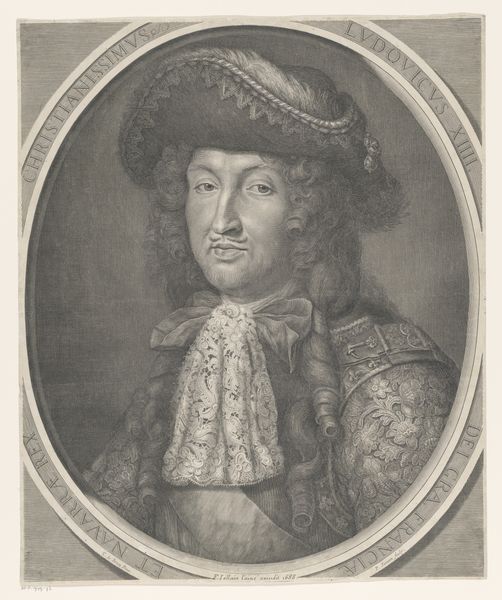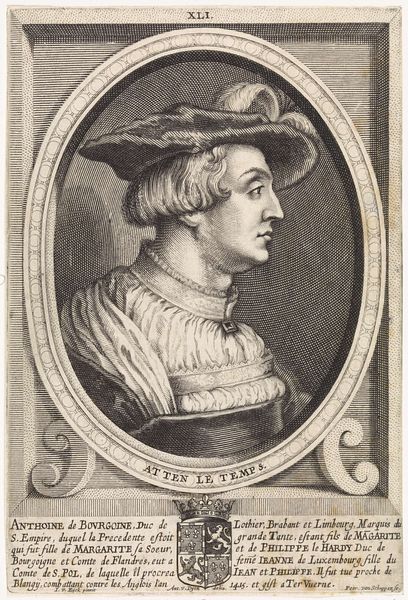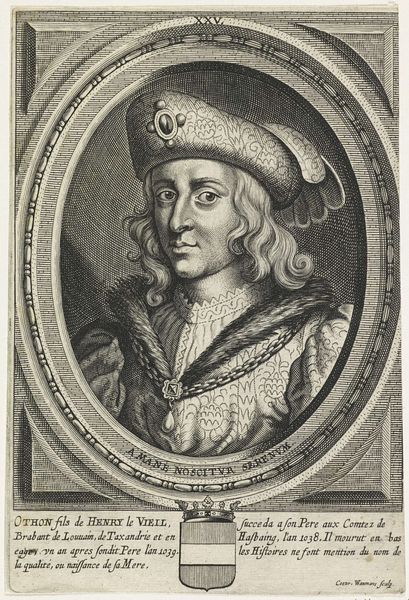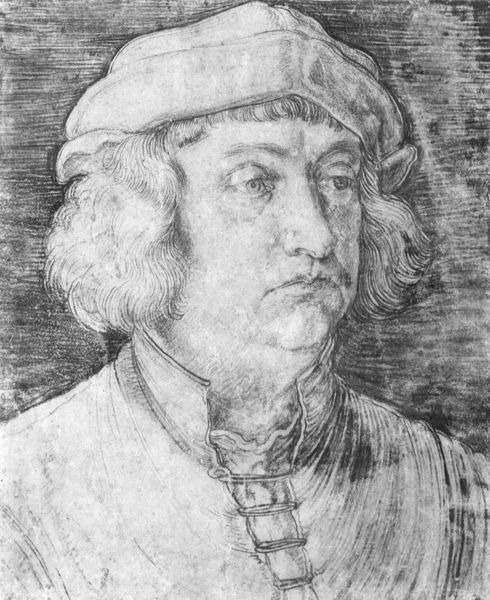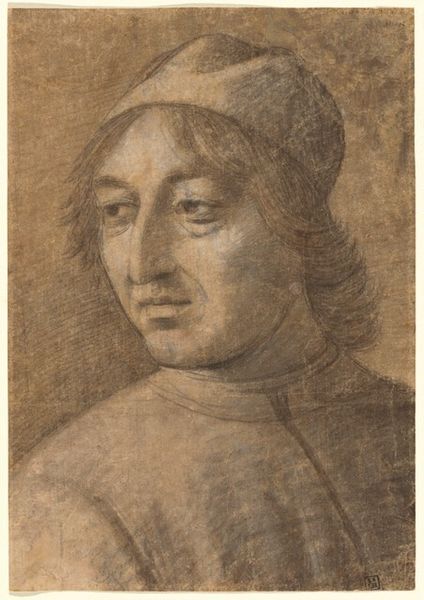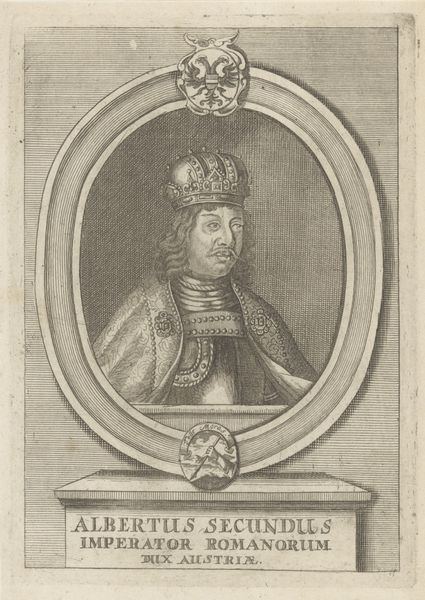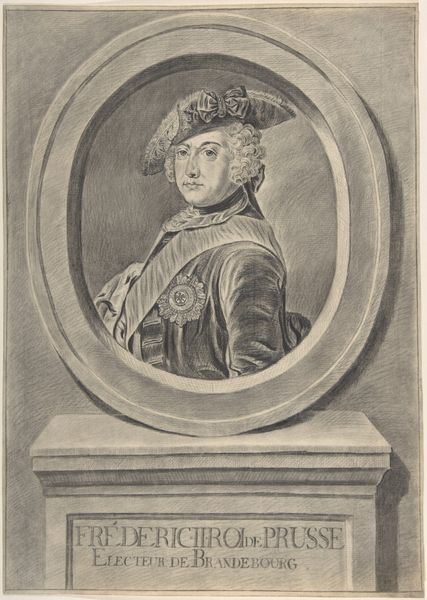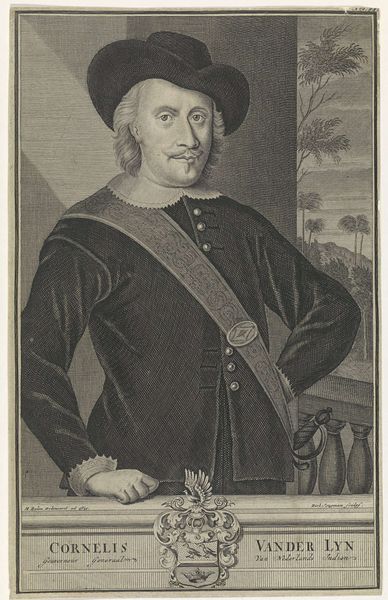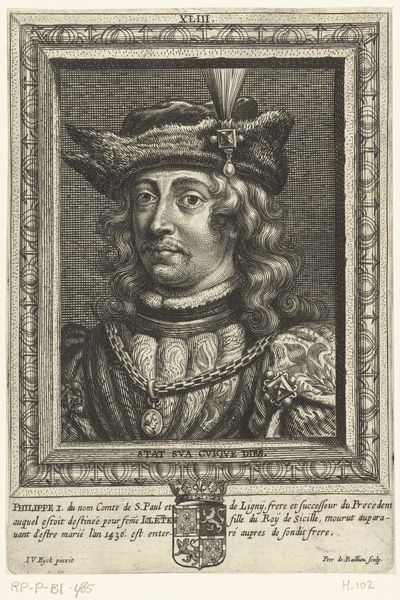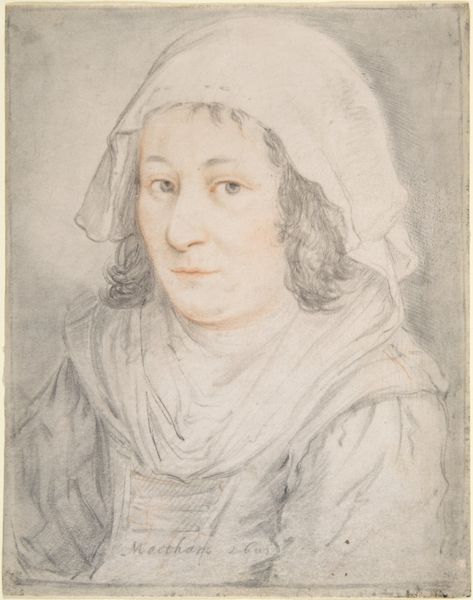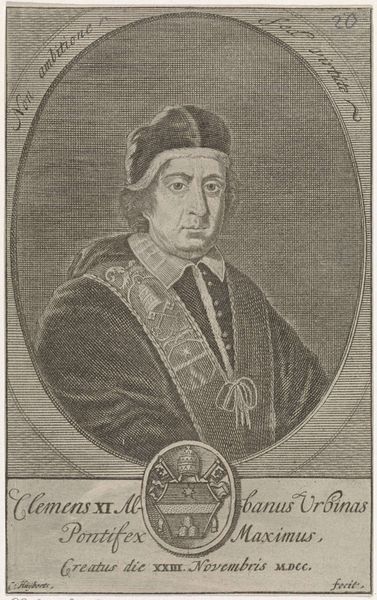
drawing, pencil
#
portrait
#
pencil drawn
#
drawing
#
pencil sketch
#
charcoal drawing
#
figuration
#
pencil drawing
#
pencil
#
portrait drawing
#
northern-renaissance
Dimensions: height 337 mm, width 297 mm
Copyright: Rijks Museum: Open Domain
Editor: This is Albrecht Dürer's "Portrait of a Young Man with a Hat," from around 1506, created using pencil. I find it quite striking; his expression seems to hold a lot of untold stories. How do you interpret this work? Curator: Beyond its technical skill, this drawing, like much of Dürer’s work, operates within a complex socio-political framework. Consider the subject’s clothing – the fur, the hat. These are markers of status, but in 16th-century Nuremberg, sumptuary laws dictated who could wear what. This portrait could be a subtle commentary on those restrictions or even an assertion of identity. What does it mean to portray oneself, or to be portrayed, in a way that may challenge existing norms? Editor: That's fascinating, I hadn't considered the clothing as a statement of defiance. The sumptuary laws would have had an effect, and Durer as an artist would have an awareness of how portraiture worked. Curator: Precisely. Think about the power dynamics inherent in portraiture itself. Who commissions a portrait? Who is represented? What messages are being conveyed, consciously or unconsciously? Even the act of meticulously rendering every detail – the folds of fabric, the texture of the fur – could be interpreted as a way of emphasizing the subject's material worth and therefore his position within a very specific social hierarchy. Do you see other details that might speak to the intersection of identity and social standing? Editor: Now that you mention it, the somewhat severe expression… could that be about projecting a certain kind of authority in a changing social landscape? Curator: Exactly. This isn't simply a portrait; it's a carefully constructed representation of a self negotiating a world full of regulations. The Renaissance wasn’t just about artistic flourishing; it was a period of immense social and political upheaval. Dürer’s work allows us to glimpse the complexities of identity formation in that context. Editor: I’ve learned a great deal by looking more closely at this portrait within its societal environment. It really brings Dürer's time to life. Curator: Indeed. By looking closely, artworks speak to more than aesthetics; they illustrate aspects of cultural issues and tensions.
Comments
No comments
Be the first to comment and join the conversation on the ultimate creative platform.
